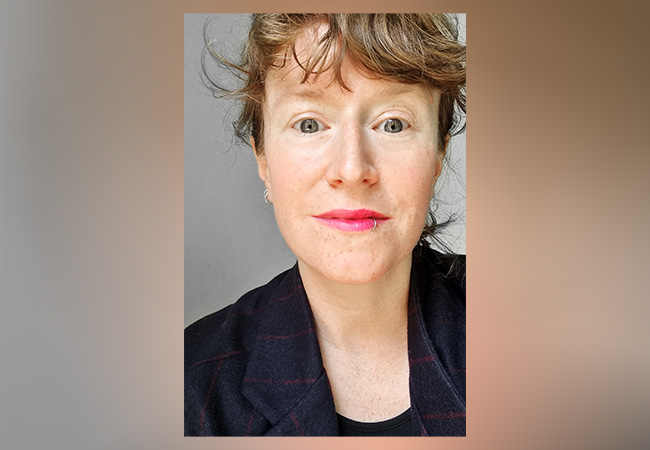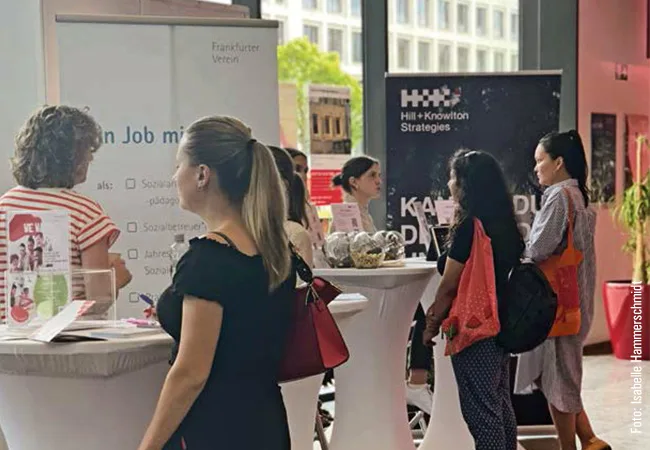Art educationalist Katja Gunkel investigates how social media, and Instagram in particular, has massively altered the way we handle pictures on a day-to-day basis.

UniReport: Dr. Gunkel, what drew you, as an expert in art education, to social media – a field that, strictly speaking, one might associate more closely with media studies?
Katja Gunkel: To answer that question, it seems appropriate to me to ask what exactly art education is understood to include. There are good reasons why our institute offers Bachelor’s and Master’s degrees under the heading “Art-Media-Cultural Education.” I myself completed my doctorate at the Chair of New Media under Professor Birgit Richard, known for her expertise in youth and pop styles as well as material cultures. The research conducted here follows the tradition of critical cultural studies, juxtaposing images of entirely different origins. With regard to visual culture, too – a field represented at the institute by Professor Verena Kuni – it would be too narrow a focus to examine art exclusively in the stricter sense. As a result, the research perspective expands, and encompasses all images that surround us in our everyday lives. In this context, it’s essential to take a critical view of aspects related to both production aesthetics and reception aesthetics, since pictures are of course both products and producers of discourses. All research therefore has to be designed in a transdisciplinary manner. That being said, the starting point always is the concrete aspect, the image phenomenon itself.
When you first took up your post, you noticed that contemporary images appear in the guise of days gone by. Has that trend faded?
Yes, in the early days, the presets for one-click image processing available on social media were quoting from analog photographs, especially in terms of their look and feel – a style influenced most of all by Instagram (Version 1.0 in 2010). The frequent occurrence of these mobile software applications – which became known as “retro camera apps” in popular culture – brought various theoreticians into the fore. In the field of pop music in particular, Simon Reynolds speaks of “retromania” (2011), which – without possessing any identity of its own – has been characterized since the turn of the millennium by the simultaneous presence of past decades and their revivals. Then there’s Hans Ulrich Gumbrecht, who perceives a “broad present” (2010), which, when confronted with a future presented as crisis, cannot let go of the past.
What originally drew me to the image phenomena was the supposed contradiction between the latest digital production technology, and the stylistic references to photographic cultural techniques that have largely become a thing of the past. I also found it interesting that with the formal aesthetic resemblance to Polaroid, the issue of original and uniqueness suddenly cropped up, at least in the form of ghostly after-images, in the discourse on mobile digital images. Today the role of “retro aesthetic” hardly plays a role any more.
For some years now, people have been speaking of an aesthetics of consumption.
It was against the backdrop of the omnipresent and varied connectedness of aesthetics and consumption in late-capitalist everyday life that the eponymous interdisciplinary joint research project where I did my doctorate and which involved Professor Heinz Drügh and Professor Birgit Richard emerged. The aim was to adopt a neutral and differentiated view of how we deal with objects for sale, as demonstrated by the huge variety of both uses and consumption, and the many different ways of appropriating objects for consumption. Without either affirming or pathologizing, a consumption-aesthetic research perspective is initially concerned with recognizing how culture-industrial objects are bestowed with aesthetic and semiotic significance, and with people’s identification with them. So the term is clearly demarcated from the negatively connoted “commodity aesthetics”, coined by Wolfgang Fritz Haug in 1971, which dominates the discourse.
How is research in this field conducted and to what extent do researchers have to accept the world of apps and (be able to) use them themselves?
Following on from the culture-analytical approach formulated by Mieke Bal, I basically take a qualitative-empirical and as a rule also inductive-phenomenological approach, which means I develop my questions and hypotheses through an intensive examination of the material and not the other way round. I begin by approaching the object of my investigation with a very open mindset, and adopt a transdisciplinary methodology to try and address the object’s various levels. I am first and foremost a researcher of images, not a social scientist. As such, I don’t conduct interviews with the users. Having started with the images, I then proceed to their production context, i.e. to the software and hardware. Taking a consumption-aesthetic perspective, I consider the app as a good that follows a logic of usability and convenience. In this way, pictures can be processed with certain preset filters. As cultural artefacts, these visual templates are modeled on certain viewing habits and pictorial traditions, and, in line with the conception of implicit knowledge, they perpetuate the sociocultural bias. This is what I find particularly interesting.
All the same, I also look at things like the advertising promises the apps use to attract consumers. Instagram, for example, uses an instant ennobling and aestheticization of mobile digital images. Thanks to filters, everything can be transformed into a “work of art” with just one click – at least that’s what the developers promise. So, on the one hand, there’s an artification of the app, combined with a democratization of production processes and user participation in the creation of art. On the other hand, there is a growing sense of alienation resulting from largely automated image processing and visual uniformity, algorithmically generated filter bubbles, platform capitalism and the commercialization of the “social,” accompanied at many different levels by precarious employment. People literally have to be able to afford participation in social media.
What about the objection that the user only pushes a button and the device or app generates the image by itself. Would you accept that as valid?
Those who adopt this type of reasoning are probably also convinced that art is the result of manual skills. However, this type of position was rendered obsolete at the very latest with the advent of concept art. In my opinion, the decision to use a specific filter when creating an image, or maybe even several filters in combination, is itself a productive act – although it is of course debatable whether the result can be called artistic. We are, however, talking about an act that exists in the real world and has great everyday relevance for many people. Apps like Instagram have fundamentally changed the way we handle images today, and potentially also the way in which we encounter the world, scanning our reality for social media-worthy photo opportunities. People used to talk about photogenicity, today they talk about Instagrammability. This interplay is particularly prevalent in tourism. People who want to ban everything virtual out of their lives simply don’t see this reciprocity.
As part of your research, you also investigated the social media photo-sharing app BeReal, which only allows its users to publish something real from their lives very spontaneously – within two minutes. Does this constitute a serious counter-movement to the optimization of photos using Instagram?
Suffice it to say that the supposed authenticity of the images is merely a staged effect. Authenticity is not essentialism, but something that functions according to certain criteria and which some people are capable of using especially well when it comes to conveying a sense of credible representation. What BeReal clearly illustrates is the struggle for an authentic existence that is both undistorted and direct. In this context, I am particularly intrigued by the latest cooperation between Meta and eyewear manufacturer Ray-Ban – where a wearable combines a fashionable lifestyle accessory with an integrated digital camera and mobile internet access. Here, too, the focus is on reducing the indirectness of taking photographs to a minimum, i.e. taking pictures without being noticed, while at the same time joining in on the action.
There is a lot of talk about which apps have a future and which don’t. Facebook is no longer relevant to young people. Will Instagram share a similar fate?
Instagram has been around for 13 years, which is quite a long time for an app. Its recipe for success is largely based on an aggressive policy of continuous updating, with the tried and tested strategy of integrating the functions developed by potential competitors (short videos modeled on Vine, face filters and stories on Snapchat, reels on TikTok, and so on). As a result, there is no escaping Instagram; it unites all the relevant functions and media formats.
There also seems to be general trend that social media users are increasingly evolving into more passive spectators instead of posting something themselves or connecting with others.
I’d basically agree with that. In terms of its media structure, Instagram facilitates the convenient and incidental consumption of content that appears automatically, as in the case of stories. When scrolling through the feed, however, I still have to perform a minimum of action, i.e. do something manually, in order to set the images in motion.
The way in which we consume media on social media is problematic, since the algorithmic selection encourages the creation of filter bubbles. If we are only shown those things that match our own interests, the content we receive may no longer be representative. The network logic promotes this uniformity. At some point, all we end up doing is reflecting ourselves.
Questions: Dirk Frank













